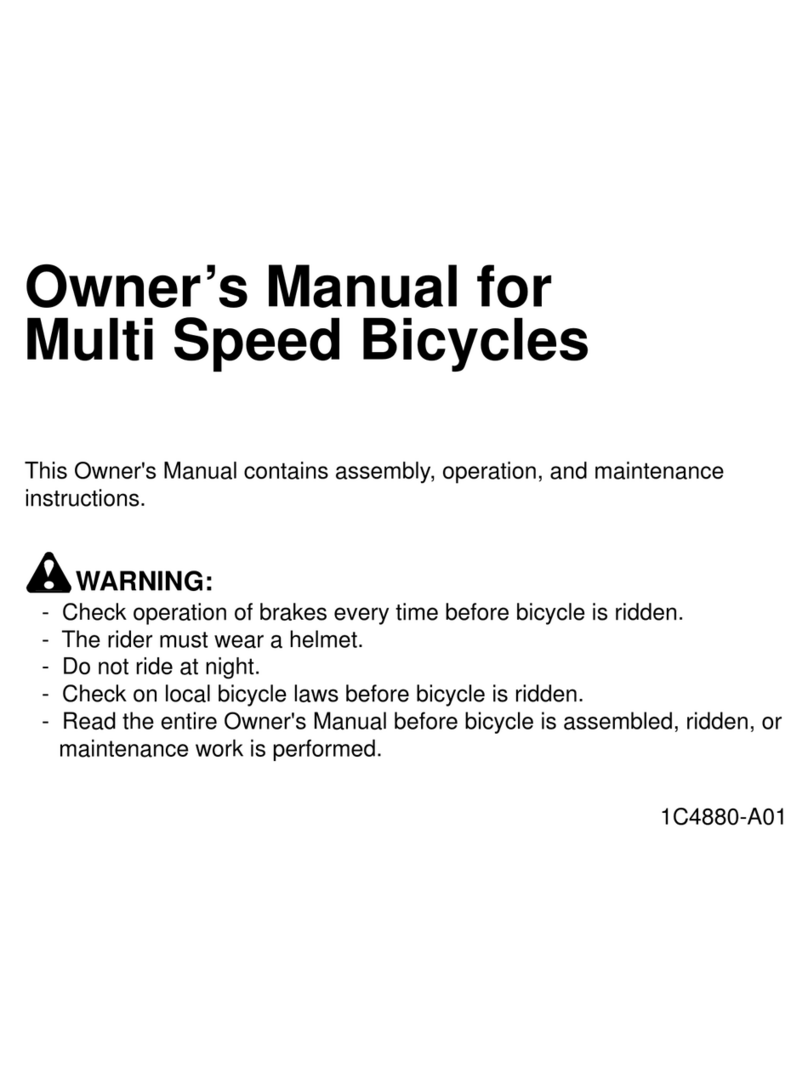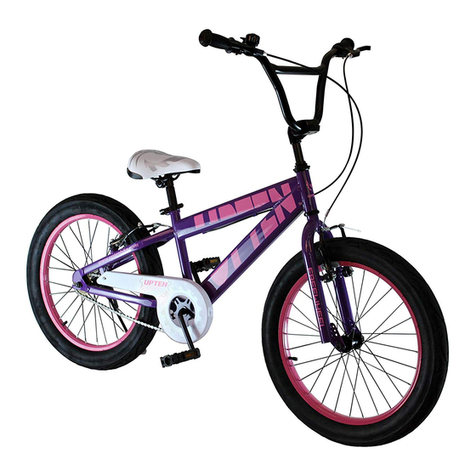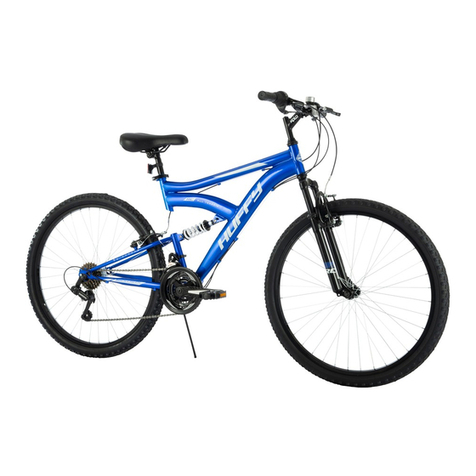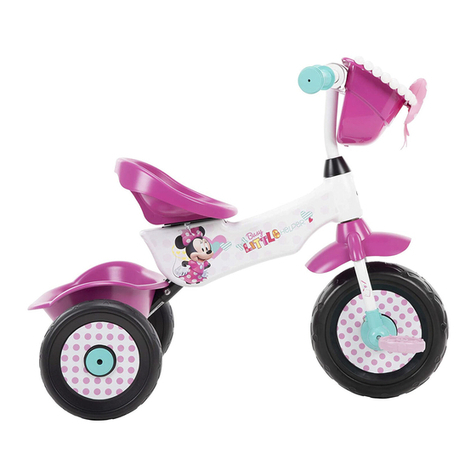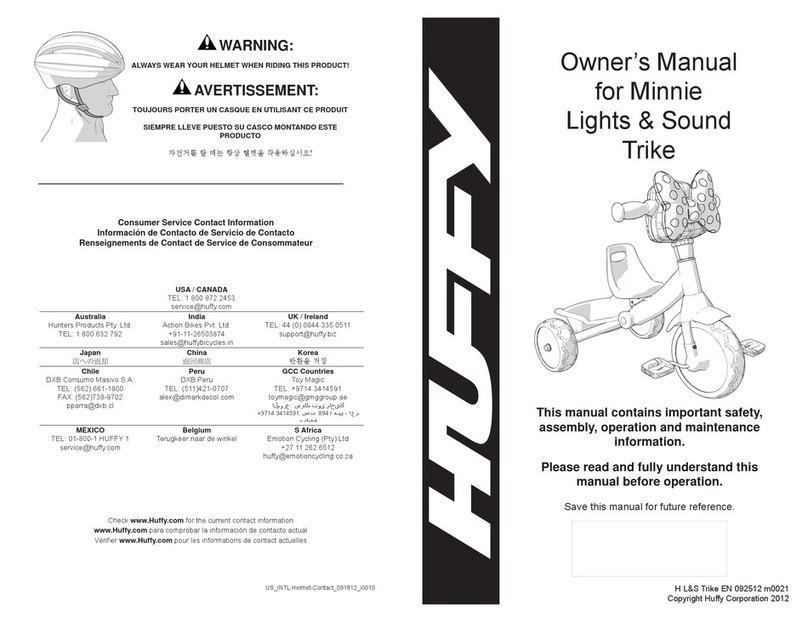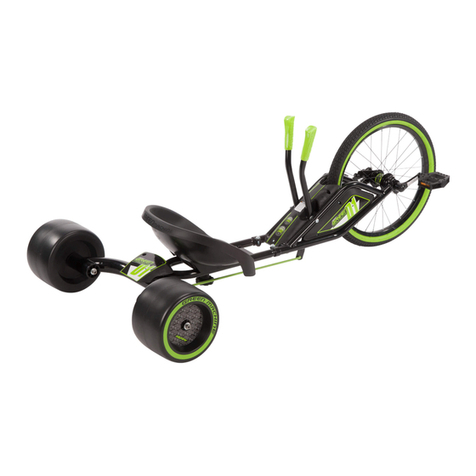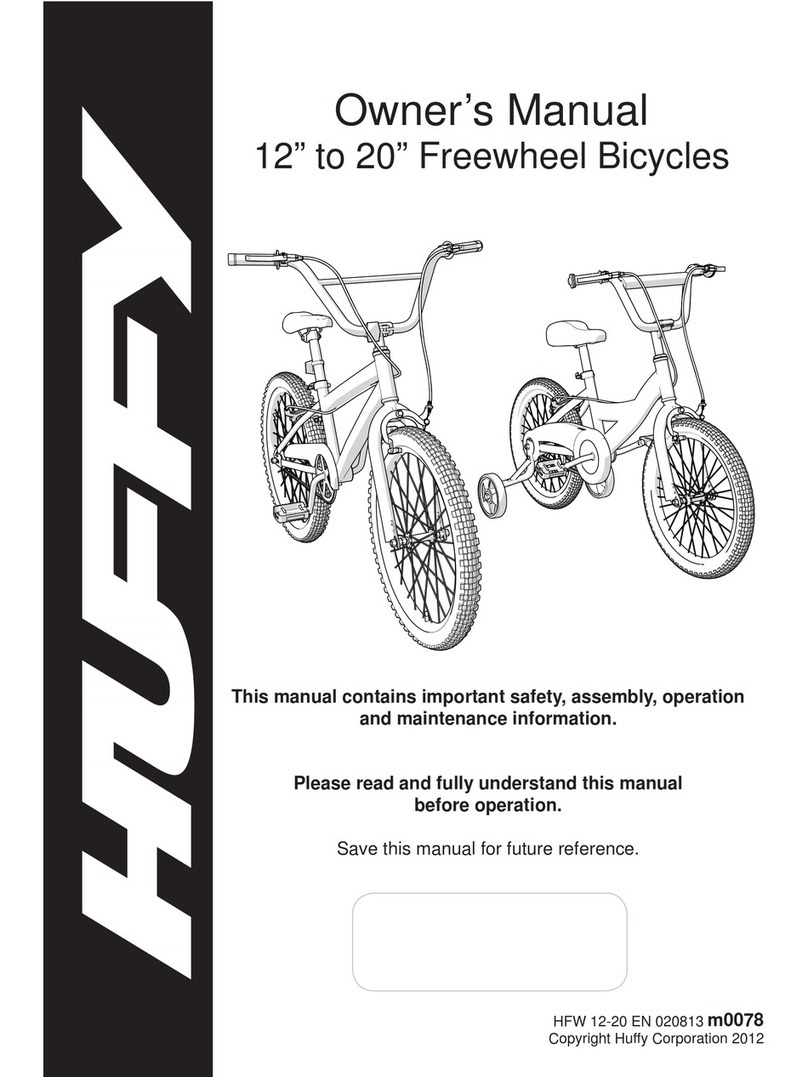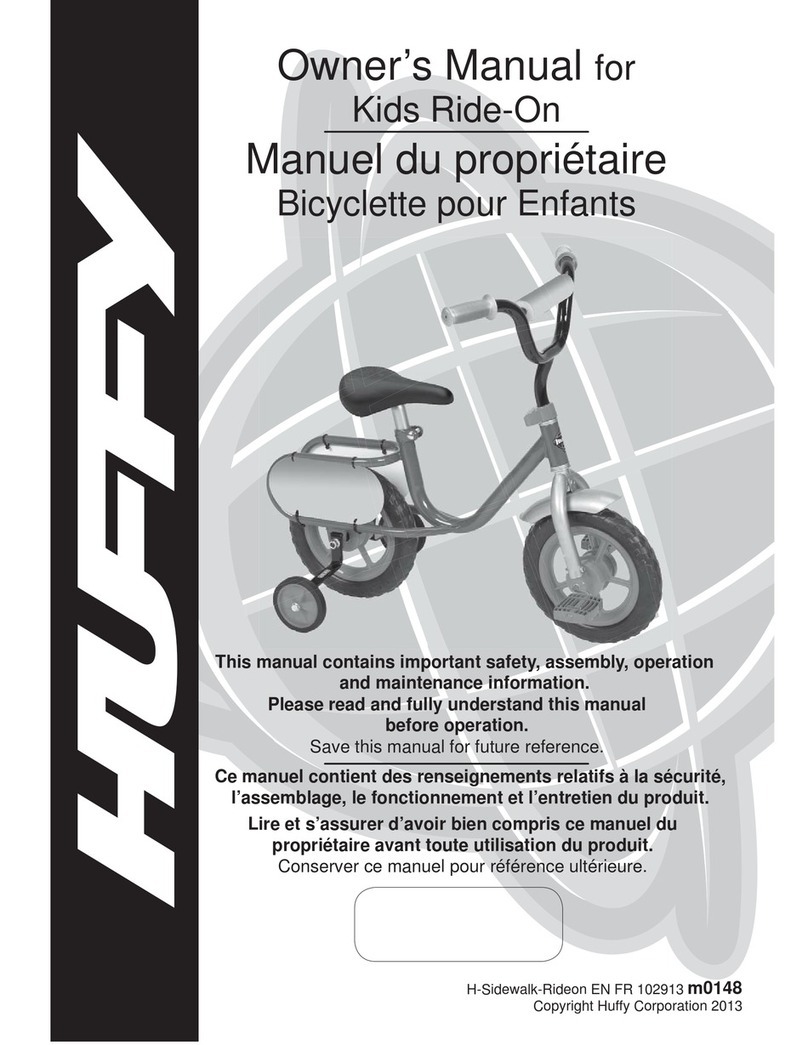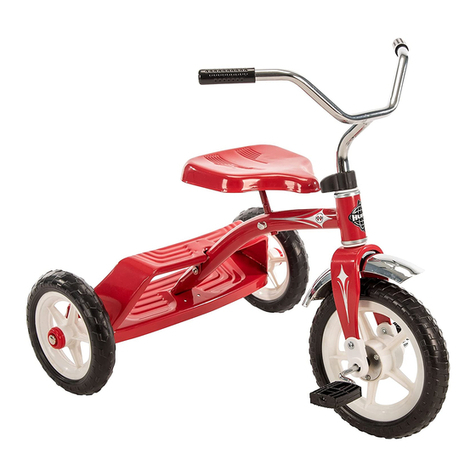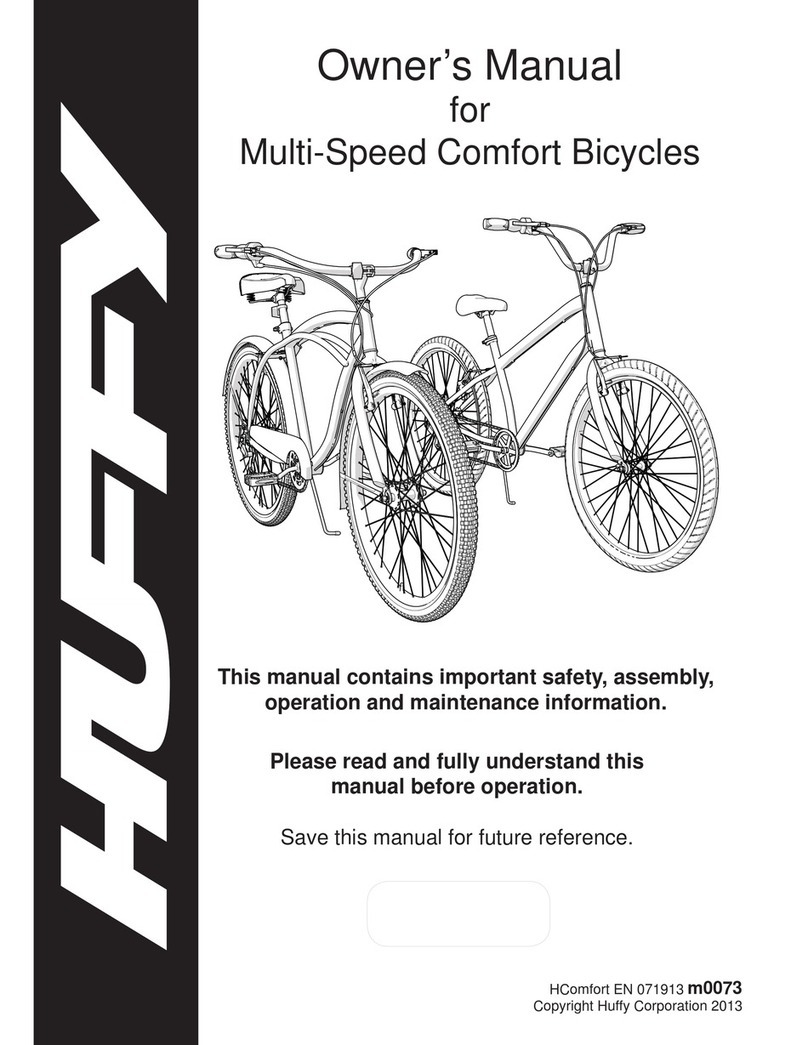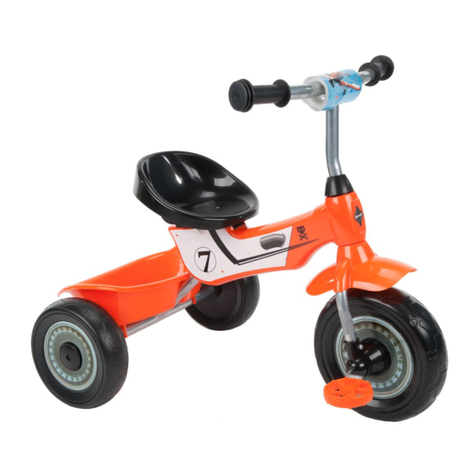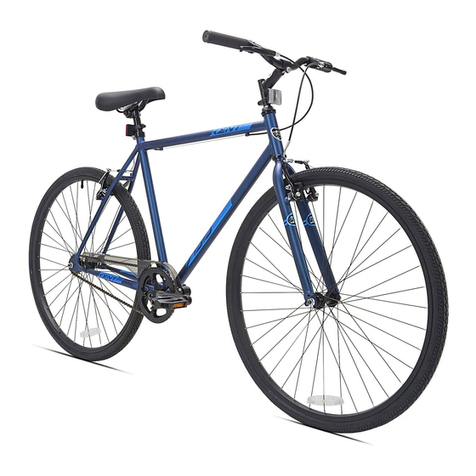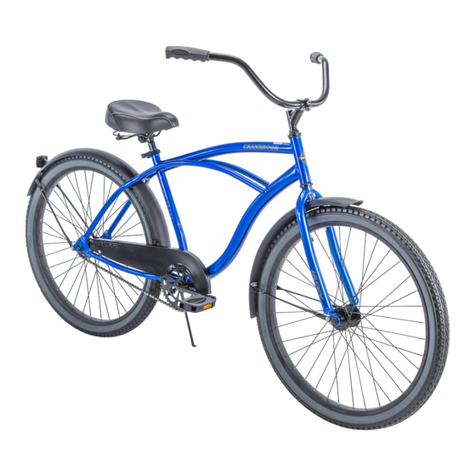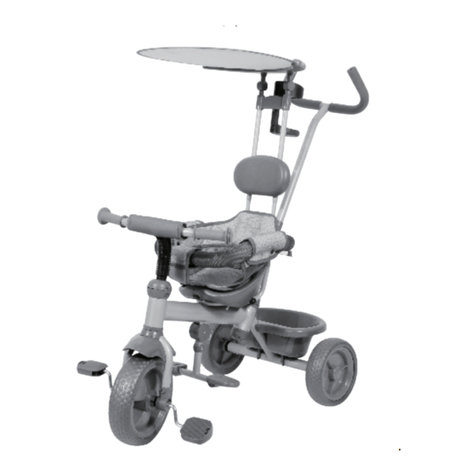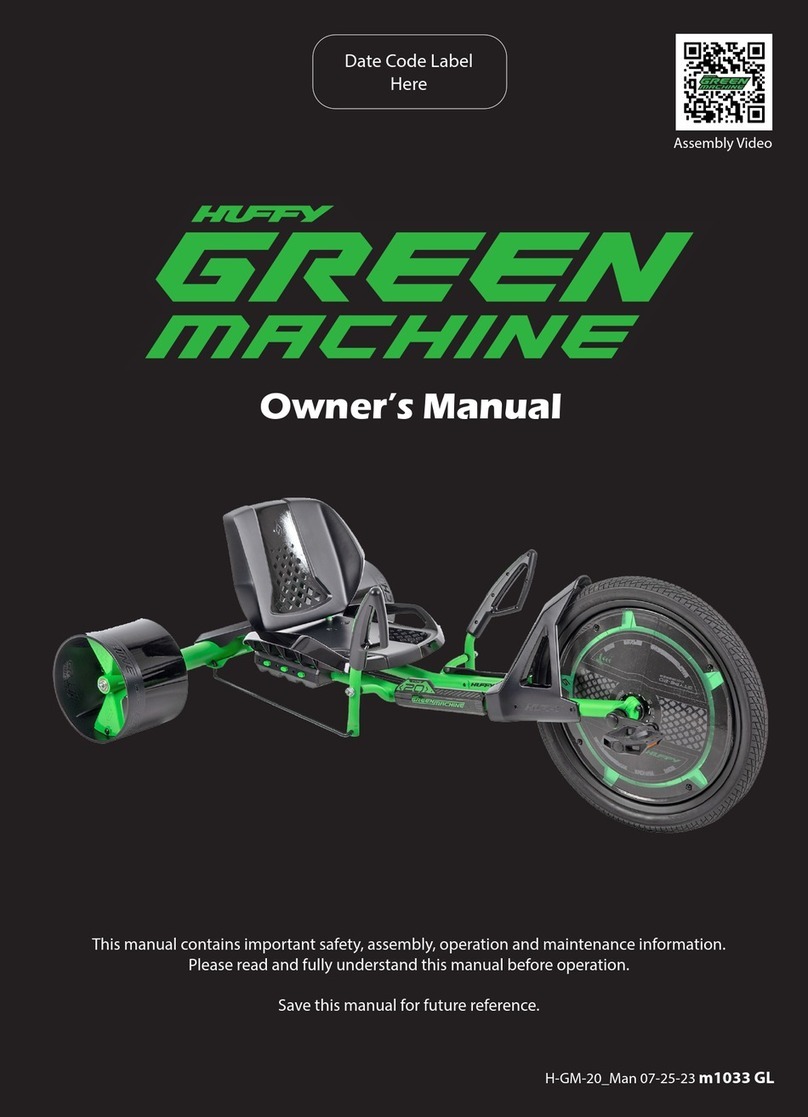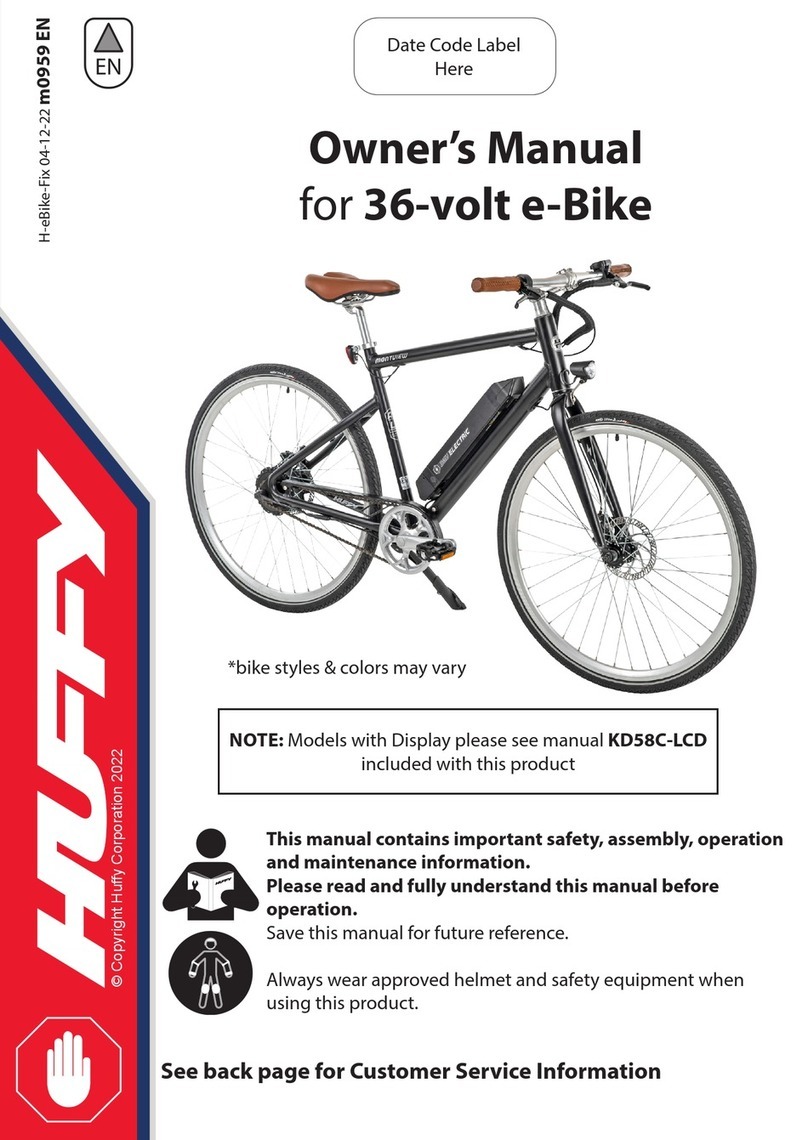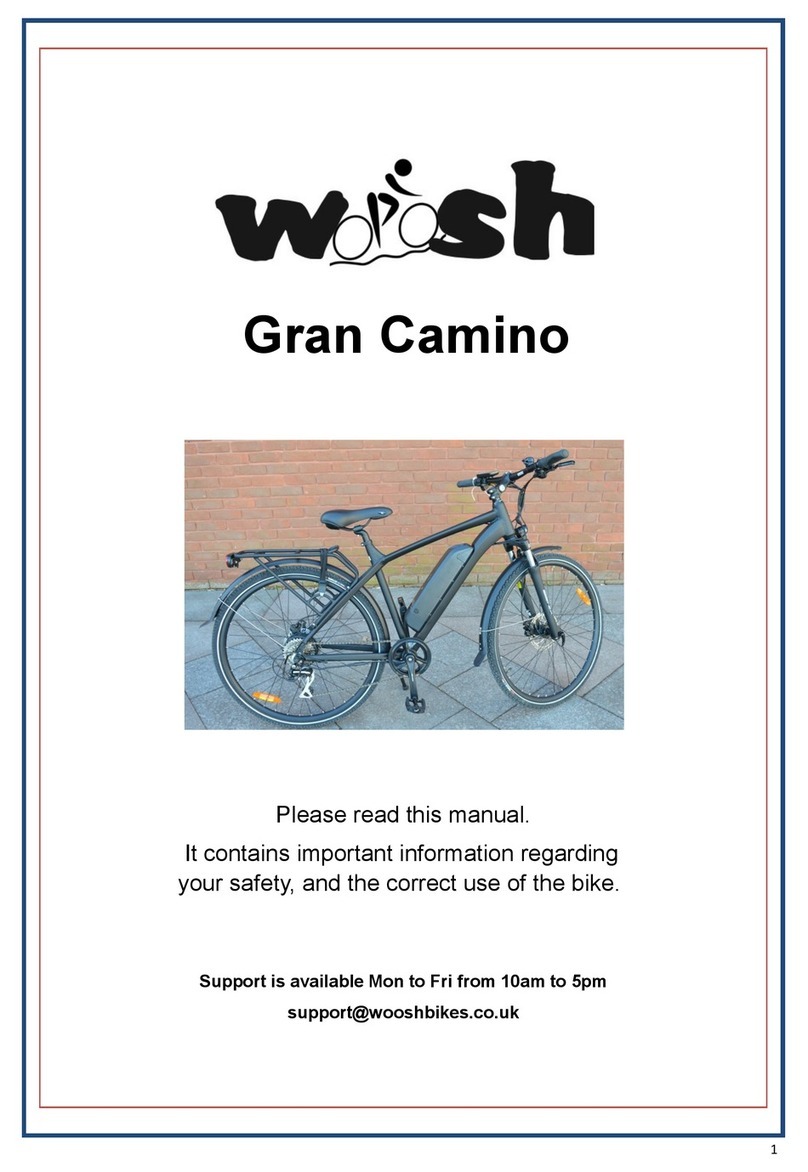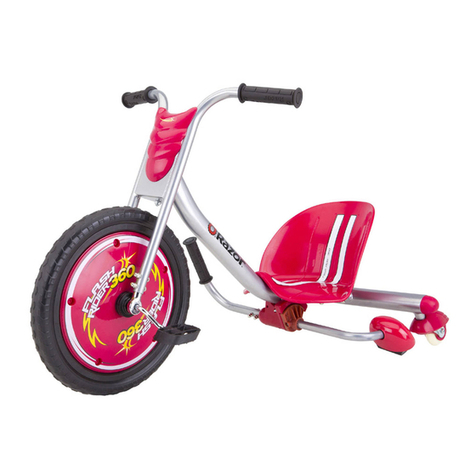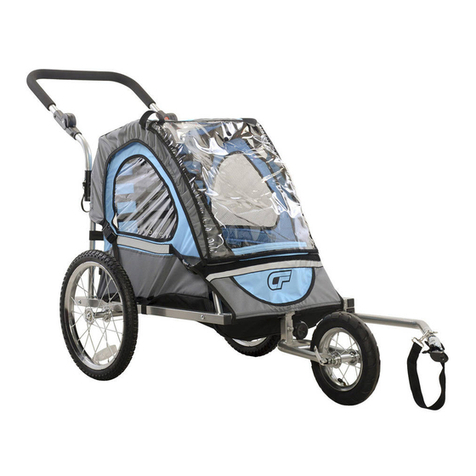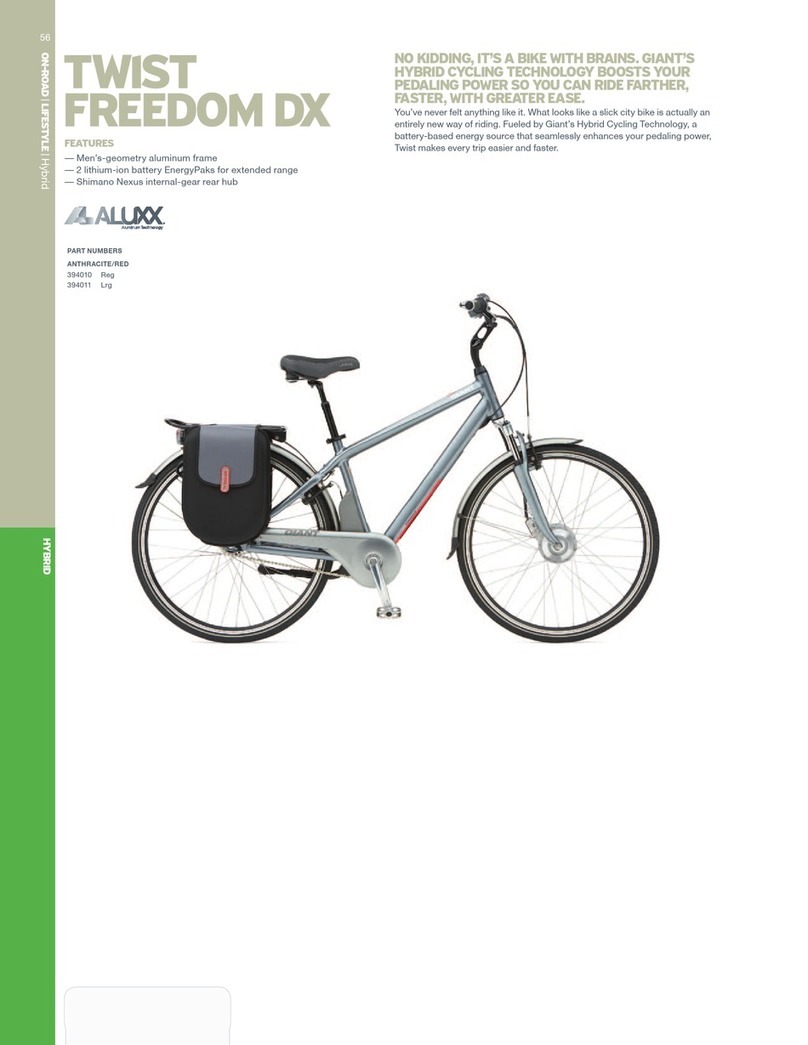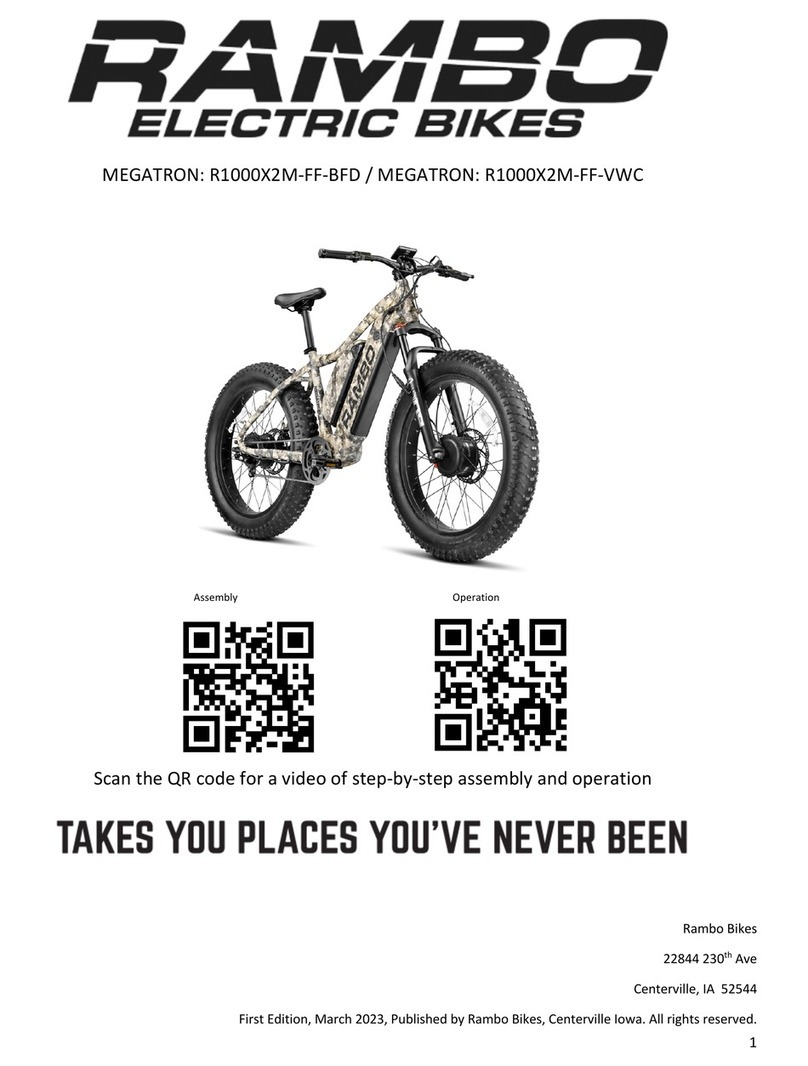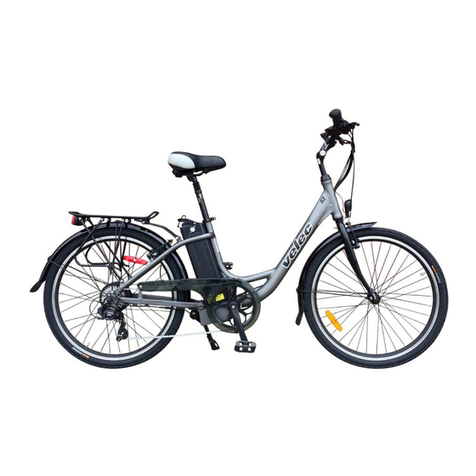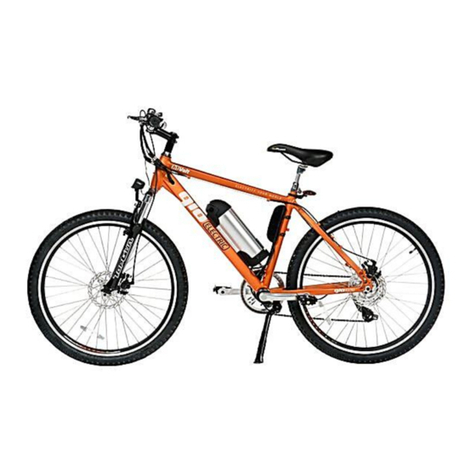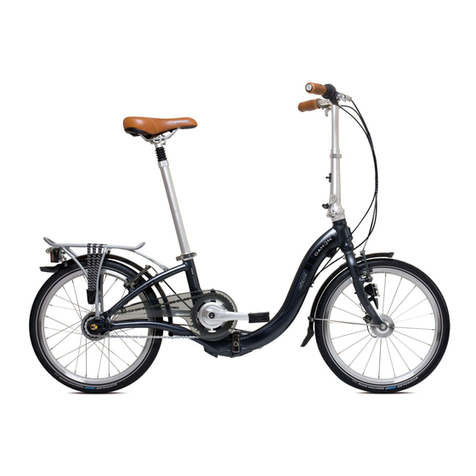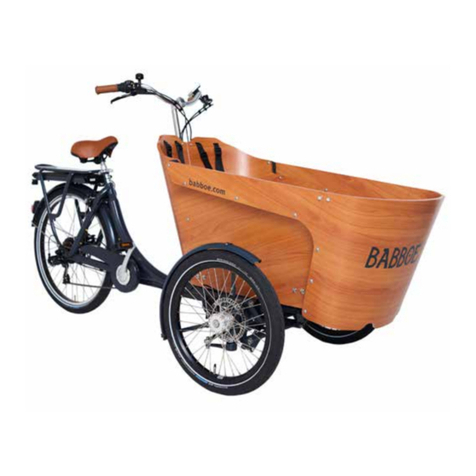
- Rider must have the skill to operate the bicycle safely. Every bicycle has different handling and
operation features. Practice riding on large, flat areas away from traffic and other hazards before
riding on the road.
- Always wear a bicycle helmet.
- Do not ride at night.
- Make sure the reflectors of your bicycle are correctly positioned. Do not remove the reflector or
replace the reflectors with lighted devices that look similar to reflectors.
- Make yourself more visible to motorists. Wear light-colored or reflective clothing, such as a
reflective vest and reflective bands for your arms and legs. Use reflective tape on your helmet.
Do not let anything cover the reflectors.
- If the bicycle has 16 inch or smaller wheels, ride only on sidewalks or on your own property. Never
ride on the street or in alleys that are used by motor vehicles.
- When riding with training wheels:
- Ride only on level areas.
- Do not ride on steep hills, uneven sidewalks, or near steps. The bicycle can tip over if a training
wheel goes off the edge of the riding surface.
- Ride straight up and down sloped surfaces, because the bicycle can tip over when riding across
sloped surfaces.
- Slow down at corners because you can not turn as quickly as bicycles without training wheels.
- Obey all traffic regulations, signs, and signals.
- Always wear shoes.
- Use extra caution in wet weather.
- Ride slowly on damp surfaces because the tires will slide more easily. Apply the coaster, caliper,
or cantilever brakes sooner than normal. Greater stopping distance is necessary, especially if
the wheel rims and tires are wet.
- Ride on the right side of the road, in a single file, and in a straight line.
- Be aware of drain grates, soft road edges, gravel or sand, pot holes or ruts, wet leaves, or uneven
paving.
- Avoid these hazards to prevent loss of control or damage to your wheels.
- Cross railroad tracks at a right angle to prevent the loss of control.
- Avoid unsafe actions while riding.
- Do not carry any passengers.
- Do not carry any items or attach anything to your bicycle that could hinder your vision, hearing,
or control.
- Do not ride with both hands off the handlebar.
If you have an all terrain style bicycle, obey these additional “Rules of Off-Road Riding”.
- Always wear the correct safety equipment.
- Use extreme caution when not riding on pavement.
- Do not ride in off-road conditions that are beyond your capabilities. Ride trails in relatively flat
areas that have few obstacles.
- Be sensitive to the environment, conscientious of the property on which you ride, and considerate
of others you may meet on the trail.
